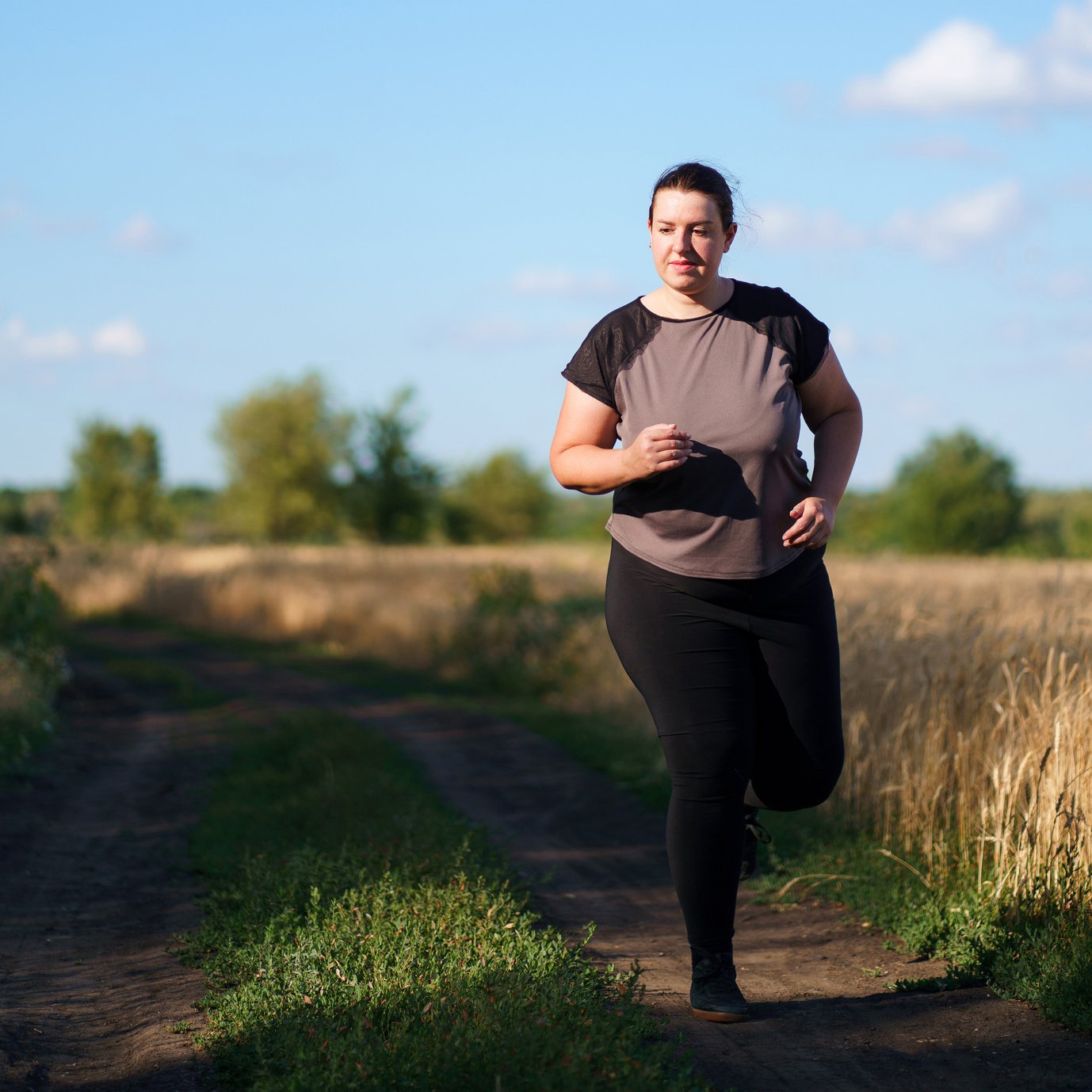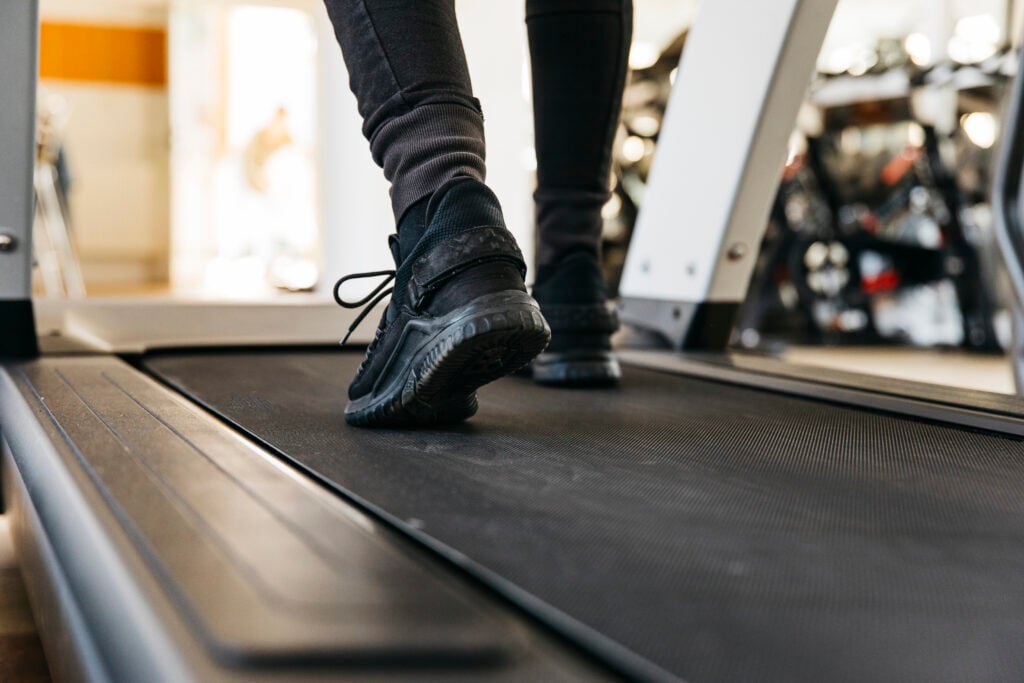If you live in a city, odds are you’re logging most of your miles on pavement—concrete sidewalks, asphalt roads, or some messy combo of the two.
And here’s the kicker: while they might look the same, they’re not. Not even close.
After 14 years of coaching runners, here’s what I’ve learned—both from science and from limping home a few too many times.
In this article, I’m gonna break down what’s under your feet, how it messes with your body (or doesn’t), and which shoes help soften the blow.
So if you’ve ever wondered whether concrete or asphalt is wrecking your legs—or just want to run smarter—keep reading.
What’s Under Your Feet: Not All Pavement’s Equal
Alright, quick ground lesson.
Concrete and asphalt are both hard, sure—but they’re built different.
Concrete is that stiff, unforgiving stuff you see on sidewalks and city plazas. It’s made of cement and aggregate, and it barely budges when you land on it.
In fact, engineering tests say it’s about ten times harder than asphalt. That’s wild.
Asphalt, on the other hand—think roads and bike paths—is a mix of tar and crushed rock. It’s got a little give, especially when it’s warm out.
Ever notice how a car tire or even your foot leaves a tiny dent on hot asphalt? That softness makes a difference.
Here’s a fun test: drop a hammer on both. On concrete, it bounces like crazy. On asphalt, it thuds. That’s your knees and hips we’re talking about.
The more energy that bounces back, the more your body has to deal with it.
Think about that for a moment before you decide to keep on reading…
Science Says: Your Body Adjusts (But Only So Much)
Now don’t panic—your body’s not just sitting there taking damage.
It’s smart.
Studies show that runners naturally adjust their stride and joint stiffness based on the surface they’re on. So if the ground is hard, your legs act like springs and absorb more shock.
Pretty cool, right?
One study even showed that the peak impact forces on concrete vs. softer ground were surprisingly similar—because the runner’s form changed to match the surface.
And get this: your shoes matter even more.
The foam in your midsoles is doing a lot of the work—sometimes way more than the surface ever could.
But here’s the deal: even if it’s subtle, those differences pile up over the long haul. Especially if you’re doing 20, 30, 50 miles a week. That little extra shock from hard pavement? It adds up—in your shins, knees, hips, everywhere.
Also, different surfaces tweak your running style:
- Soft ones (grass, track) absorb more energy, so you have to push off harder.
- Hard ones return energy better—great for speed, but your joints pay for it.
So yes, stiffer ground can help you go faster… but the price is wear and tear.
Bottom line? Surface stiffness changes how your body runs—and how much punishment it takes.
Concrete: The Toughest of the Tough
Alright, let’s talk concrete—the sidewalk king. It’s everywhere, and it’s rough on your legs. But it’s not all bad.
Let me break down the ups and downs.
It’s Everywhere
You can’t walk a block in most cities without hitting concrete. It’s often the safest option too—no cars swerving next to you like on the road.
Predictable, flat, and right outside your door. Hard? Yeah. But convenient? Absolutely.
Super Predictable
Sidewalks are flat. No roots, no potholes, no snake hiding in the trail. That means you can keep a solid pace, especially if you’re doing tempo or speed work.
It’s easier to zone in and focus on your stride when the ground isn’t throwing surprises at you.
Plus, ever notice most world records in road races happen on pavement?
That’s not a coincidence.
Flat, hard surfaces are great for speed—just make sure your legs are ready for the impact.
Always Ready to Go
Concrete doesn’t care if it’s raining or snowing. Unlike muddy trails or soggy grass, sidewalks are ready year-round.
City crews usually clear ’em too, which means you’ve got a winter option without needing to drive anywhere.
The Brutal Truth About Concrete
Alright, let’s not sugarcoat it—concrete is a tough bastard.
Sure, it’s everywhere—sidewalks, city blocks, you name it. But when it comes to running on it? Not ideal. Actually, it’s the worst.
Here’s the deal: concrete is stupid hard. Like, scientifically hard.
Lab tests show it’s got a super high elastic modulus (yeah, that’s fancy talk for “zero give”). One study even found it absorbs 10 times less impact than asphalt.
Translation? When your foot hits the ground, there’s no cushion. It’s like slamming a hammer into stone—and guess who the hammer is? Yep, your body.
So where does all that shock go? Straight into your ankles, knees, hips, and spine. If the choice is between concrete and asphalt, take asphalt – it is much more forgiving.
Injuries? Yeah, They’ll Find You on Concrete
Here’s the harsh reality: concrete running beats you up over time.
Not always overnight—but eventually, it catches up. Overuse injuries creep in—shin splints, plantar fasciitis, knee pain, stress fractures. You name it.
A coach I know ditched concrete for his high school team entirely. Guess what? Stress fractures dropped off the map.
Running on concrete is like sparring with a heavyweight—it hits back, and it doesn’t get tired. If you’ve already got some minor aches, it’ll make ‘em worse, fast.
Think about this: concrete is 10 times harder than asphalt. And even if each step sends just 2–3% more force up your legs, multiply that by thousands of strides in a run.
Now do that four or five days a week.
That’s a recipe for breakdown.
And Don’t Forget the Slip Factor
On top of all that? Concrete turns slick when wet.
Ever hit a sidewalk painted with those white lines in the rain? It’s like stepping on ice.
Fallen leaves, sealed walkways, rain—concrete gets slippery fast.
Asphalt, being a bit rougher, usually gives you more grip in bad conditions. Not perfect, but safer.
Bottom line: If you have the choice, don’t make concrete your main training ground. Use it when you have to, but don’t build your base on it. Your joints will thank you later.
Asphalt – The “Less Evil” Option
Now let’s talk asphalt.
Still pavement, still hard—but miles ahead of concrete in terms of forgiveness.
Again, let’s break down the ups and downs of this surface:
1. Softer Underfoot
Compared to concrete, asphalt’s got a little more give. Technically, it absorbs more energy—like a built-in shock absorber.
Runners often describe it as “less jarring,” and they’re right. It’s not exactly a cloud, but it won’t beat your legs down as badly.
Even doctors agree: “Asphalt is less hard than concrete.”
2. It’s What You’ll Race On
Most road races—from your local 5K to the Boston freakin’ Marathon—are run on asphalt.
So if you’re racing on it, train on it. You want your legs used to that surface come race day.
Asphalt is smooth, flat, and lets you lock into a steady pace—perfect for tempo runs, long runs, and speed work.
Some evidence even hints that asphalt may help your running economy a bit. Not like a trampoline or anything, but the slight give might bounce back a smidge of energy. I’ll take every edge I can get.
3. Better Flow, Less Fuss
One of the best things about asphalt? You can run for miles without stopping every block.
No curb-hopping, no dodging pedestrians. Just stretch out your stride and zone in.
On a trail or a road shoulder, I can really get into my groove—something sidewalks rarely let me do.
4. Easier on the Achilles
This one’s big if you’ve got cranky tendons: asphalt puts a little less strain on your Achilles than concrete.
Why? Because that slight softness reduces the sudden yank on the tendon when your heel hits the ground. It’s subtle, but for folks with Achilles issues, every bit helps.
My Take?
If it’s between asphalt and concrete, I’m picking asphalt every damn time.
So are most experienced runners I know. The science may still be catching up, but our legs already know the truth: concrete hurts, asphalt is manageable.
And hey, asphalt ain’t perfect—we’ll talk about that too. But if your city runs are mostly pavement? Stick to the blacktop when you can.
What to Watch For on Asphalt
Let’s get one thing straight – asphalt ain’t soft. It’s just softer than concrete.
That’s like saying a slap is better than a punch – still gonna sting if you don’t respect it.
I’ve logged thou
sands of miles on asphalt roads, and yeah, it’s the better choice when you’re stuck between concrete sidewalks or dodging traffic. But there’s stuff you’ve gotta keep your eyes on.
Camber & Slope – The Sneaky Strain
Ever run a stretch of road and notice one hip starts nagging you outta nowhere? Could be the camber messing with your stride.
Roads are rarely flat – they’re sloped for drainage. Looks subtle, but that tilt means one foot’s always hitting lower than the other. Over time?
Boom – IT band flare-ups, hip pain, weird imbalances.
A chiropractor once broke it down to me like this: if you’re always on that slant, your lower foot ends up overpronating and throwing your whole alignment off.
That stuck with me.
It’s like doing squats with one shoe thicker than the other – eventually, something’s gonna bark.
My fix? If I’m on a quiet road, I switch sides halfway through – out on the right, back on the left. Keeps things even.
On busier roads, I hunt for the flattest section – often near the center line – but only if it’s safe.
Think of it like the track: nobody runs laps all day in the same direction without reversing, right? Same idea here.
Potholes, Cracks, Gravel – Watch Your Step
Asphalt gets chewed up fast – weather, traffic, time.
I’ve nearly wiped out more than once because I zoned out and missed a crack or rock hiding in plain sight. Shoulder running is especially sketchy – that’s where all the debris collects.
Broken glass, gravel, junk… even the odd beer bottle on a weekend morning run.
I train myself to scan the ground a few feet ahead every few strides. Not constantly staring at your feet – just enough to avoid eating asphalt.
Especially after heavy rains in Bali. Trust me, stepping on a wet branch at 6:30 pace is not how you want to start your Monday.
Traffic – The Real Threat
Look, the pavement won’t injure you like a car will. Hard truth.
Most injuries from road running aren’t from the surface – they’re from cars. Period.
I once had a guy in a truck brush past my elbow like I wasn’t even there. Since then, it’s face-traffic or nothing. Non-negotiable.
If you’ve only got high-traffic roads around, you might be safer on the sidewalk – concrete or not.
Still a Hard Surface – Don’t Get Cocky
Let’s not kid ourselves – asphalt still beats up your legs if you overdo it.
Shin splints, stress fractures, sore joints… been there, done that. Just ‘cause it’s a notch softer than concrete doesn’t mean you’re bulletproof.
I learned that the hard way ramping up mileage too fast. My knees were screaming.
The problem wasn’t just the surface – it was my ego pushing too far, too fast.
Asphalt can help reduce the likelihood of injury, sure, but only if you train smart.
That means good shoes, recovery, maybe some cross-training to give your joints a break.
Bottom line? Asphalt’s your friend – most races are on it anyway. But treat it with respect. Watch your form, scan for hazards, and stay alert. That’s how you stay in the game.
Your Turn: Do you run mostly on asphalt or concrete? Got a favorite low-traffic route or a road running hack? Drop it in the comments – let’s share what’s working.
The Science Stuff (But Keep Your Eyes Open)
Let’s bust a myth first: science hasn’t officially declared concrete as the evil villain some make it out to be.
Researchers like Dr. Benno Nigg—a biomechanics legend—have pointed out that studies don’t show a clear link between running surface and injury. Sounds wild, right?
One controlled study even found no real difference in the peak forces your body takes on different surfaces.
Why? Because runners are smart. Subconsciously, we adjust. Shorten the stride, soften the landing—it’s like our bodies know how to protect us.
Still, don’t let that fool you into thinking surface doesn’t matter. It does. Especially over time.
Physics Doesn’t Lie
Now here’s where logic kicks in. Concrete is way denser than asphalt—like, orders of magnitude harder. It doesn’t give an inch.
Asphalt, while still firm, has just a bit more give. Like running on a packed trail versus a tile floor.
Imagine this: every step on concrete is like getting hit with a tiny hammer. Not enough to break you at first, but after 30,000 steps on a long run? Yeah, you’ll feel it.
I always say concrete charges you a tax with every stride, and the “bill” comes in the form of shin splints, aching knees, or barking feet.
The Coaches Agree: Pick Asphalt
I’ve read tons of running books, talked to physios, and swapped stories with marathon vets.
The consensus is crystal clear—when you don’t have access to soft trails or turf, asphalt is your go-to.
One coach even said, “Avoid concrete like the plague.” That might sound dramatic, but anyone who’s done long-term training on sidewalks knows it’s not far off.
Concrete’s the hardest of the hard. Asphalt’s more middle-of-the-road. Literally.
But Hey—Not Everyone Feels It the Same
Full honesty—some folks do just fine on concrete. They’ve got cast-iron legs or they just don’t have options.
And you can train safely on concrete if you’ve got solid shoes, smart programming, and a recovery game on point.
In fact, softer surfaces like grass or sand can sometimes backfire too.
I’ve had runners develop Achilles issues because the surface gave too much, and their lower legs overworked to stabilize.
So yeah—both ends of the spectrum have pros and cons.
But in a face-off between concrete and asphalt? Concrete’s the hard-hitting bully, asphalt’s the rough-around-the-edges buddy who won’t beat you up quite as bad.
Final Word: Go Asphalt When You Can
So here’s the real-deal advice from a guy who’s been through it:
If you’ve got the choice, go with asphalt. It’s just a bit more forgiving, and over months and years, your body will thank you.
It’s also usually closer to what you’ll race on. Faster surface, better bounce, and easier on your legs. Not perfect—but you can work with it.
Concrete? That’s your last resort. Use it when it’s the only safe option—like a sidewalk next to a crazy road—but don’t make it your main training ground.
And no matter what you run on, mix it up. Hit some trails, hop on a treadmill, or sneak in a recovery run on grass once a week. Variety keeps you running strong and injury-free.









